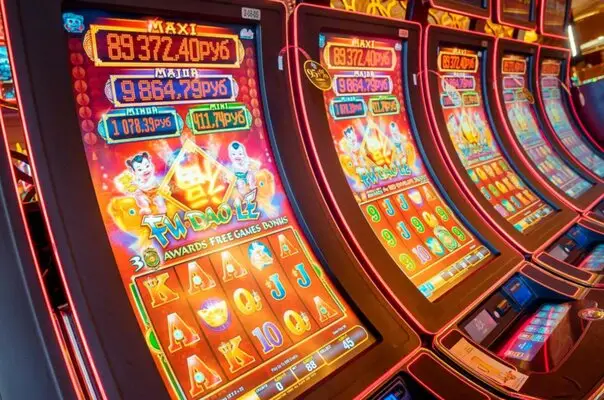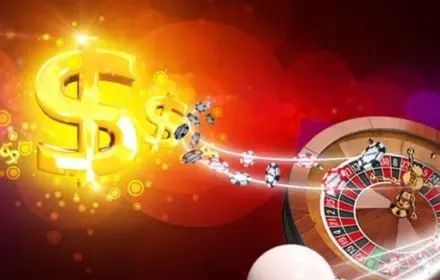Gambling is a multifaceted world of games of risk and calculation, where chance meets skill, and strategy can alter the outcome. The term has entered professional jargon as a designation for the entire gambling entertainment industry, from classic casino games to modern hybrid formats.
For a correct understanding, it is important to consider what gambling is and how it differs from betting.
Gambling: Explained Simply
Gambling is a general term for gambling games involving money, where the player operates a bankroll, takes risks, and aims to win.
Unlike sports betting, where forecasting and analytics take the lead, gambling entertainment creates a special environment. Here, luck and chance create unpredictable results.
Game Mechanics and Rules
Gambling is a set of formats, each with its own rules. In roulette, it’s choosing a number or sector; in poker, it’s card combinations and bluffing skills; in slots, it’s the RTP coefficient determining the return of funds. Blackjack and baccarat focus on counting and mathematics, while lotteries operate on pure chance.
Gambling and Betting: Key Differences
Gambling is an activity where the outcome is often determined by chance. Betting, on the other hand, focuses on predicting sports events and analyzing data.
The main difference lies in the nature of control:
- In betting, players analyze statistics, team history, and bookmakers’ odds;
- In casinos, players rely on strategy, but the final word always remains with chance.
As a result, the differences lie in the degree of influence of intellect and analytics on the outcome.
Types of Gambling Games: Examples and Specifics
The gaming industry is not a single phenomenon but a combination of directions. The sector includes dozens of formats, each with unique rules and mechanics:
- Casino games: roulette, blackjack, baccarat, poker, slots.
- Lottery: a format with minimal bets and full influence of chance.
- Dice games: fast gameplay with high dynamics.
- Hybrid formats: combinations of betting elements and classic games.
Each discipline forms its own management strategy and rules that affect RTP and winning prospects.
Money, Risk, and Strategy
Gambling is about risk management and constant bankroll management. Gambling for money requires a systematic approach because chance can quickly change the balance.
In a professional environment, principles of capital management are actively used, where limits are set, strategies are established, and emotions are controlled.
Skill and Intelligence vs. Chance
The gaming industry is a paradoxical system where intellect and strategy strengthen positions, but luck often shapes the final outcome. In poker, the key factor becomes reading opponents’ skills. Slots are dominated by chance, while in roulette, the main tool remains the strategy of bet distribution.
Gambling is not just about seeking a win but also entertainment, where the casino atmosphere and excitement create the value of the process. Forecasting plays a greater role in betting, where bookmakers set odds based on statistics and analytics.
This is a space where effective bankroll management distinguishes a professional from a novice. Financial discipline, betting strategy, and probability calculations form the basis of long-term participation.
History of Development and Industry Scaling
The gaming industry is a phenomenon with roots dating back to ancient times. The first gambling games were recorded in Ancient China and Rome, where dice and primitive card analogs were used. Over time, formats evolved: Europe introduced roulette and baccarat to the world, while the USA solidified the popularity of poker and blackjack.
The emergence of online platforms in the 1990s expanded the audience and turned the industry into a global market. Today, the sector’s turnover is estimated in the hundreds of billions of dollars annually.
Bankroll Management: Practice and Examples
Clear control methods are applied in a professional environment. One approach is the 2% rule: a player uses no more than 2% of the total bankroll for one bet. This strategy reduces the risk of total capital loss. Another example is the fixed bet system, where the size of each bet remains constant, allowing for stable control of dynamics.
List of bankroll management principles:
- setting limits on daily and monthly expenses;
- calculating probabilities before each bet;
- analyzing RTP and rules of the chosen game;
- avoiding impulsive decisions;
- using a “small steps” strategy for long distances.
Such discipline turns the gambling process into a manageable system with clear boundaries. Bankroll control allows for stability even with a high level of risk and chance in the game.
Modern Hybrid Formats
Gambling is a space where innovations emerge. Modern projects combine elements of casinos and betting, creating hybrid models.
For example, developers offer platforms where within one session, a player bets on the outcome of a football match and then spins slots, increasing the overall winning coefficient. Such formats expand the audience and increase engagement.
Perspectives and Future of the Market
The gaming industry is a dynamic sector that actively integrates digital technologies. Virtual reality immerses players in the atmosphere of a real casino, artificial intelligence helps calculate strategies and control risks, and blockchain ensures payment transparency.
In the coming years, market growth is predicted due to new formats and increased interest in intellectual games.
Gambling Is an Entire Industry
An industry that combines gambling games, intellectual strategies, and capital management. Unlike betting, where forecasting and analytics are key to success, gambling entertainment forms a unique ecosystem where chance and skill intertwine.
 en
en  ru
ru  de
de  ar
ar  es
es  hi
hi  fr
fr  nl
nl  it
it  pt
pt  el
el 













